
Dancing with Dragonflies

The dragonfly, a creature reminiscent of a fairy, is often hailed as the harbinger of summer, gracefully flitting among verdant foliage, imbuing the surroundings with freshness and vitality.
Yet, the intricacies of dragonfly life and ecology extend far beyond our initial perceptions. Let us embark on a journey to explore the enchanting world of dragonflies.
To commence our exploration, let us first delve into the aesthetic allure of the dragonfly's visage. The dragonfly boasts a remarkably unique physique characterized by its elongated form and adorned with long, translucent wings akin to delicate gossamer.
These wings, resembling the ethereal sheen of cicada wings, are lightweight and supple, enabling the dragonfly to navigate the aerial realm with unparalleled grace.
Related
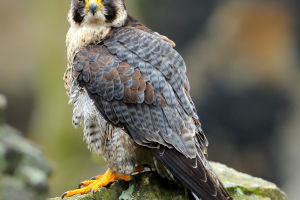 The Peregrine Falcon, a globally renowned predator, captivates with its grace and hunting prowess, urging collaborative conservation.
The Peregrine Falcon, a globally renowned predator, captivates with its grace and hunting prowess, urging collaborative conservation.
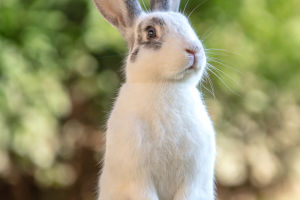 Cute Rabbit: A smart elf living between nature and culture.
Cute Rabbit: A smart elf living between nature and culture.
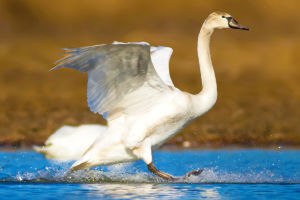 Swans embody elegance, and mythical significance in diverse cultural narratives.
Swans embody elegance, and mythical significance in diverse cultural narratives.
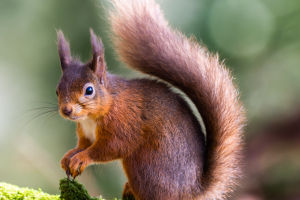 Explore the multifunctional wonders of a squirrel's big, fluffy tail, from balancing act to cozy quilt.
Explore the multifunctional wonders of a squirrel's big, fluffy tail, from balancing act to cozy quilt.
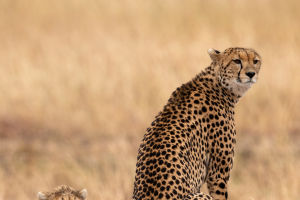 The leopard is a feline that inhabits temperate, savannah, or semi-desert areas.
The leopard is a feline that inhabits temperate, savannah, or semi-desert areas.
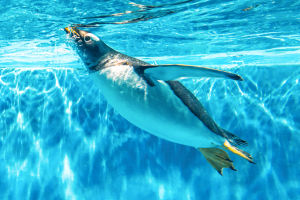 Gentoo Penguins are charming and fast but need conservation due to habitat threats.
Gentoo Penguins are charming and fast but need conservation due to habitat threats.
Moreover, the dragonfly's body exhibits a kaleidoscope of hues—vermilion, azure, emerald—casting a mesmerizing iridescence under the caress of sunlight, rendering it a sight of sheer splendor.
The behavioral repertoire of dragonflies is equally captivating. Preferring habitats near lakes, rivers, and ponds, these aerial predators prey upon diminutive insects, employing a hunting technique that is as unique as it is efficient.
With the patience akin to a seasoned hunter, dragonflies lie in wait, poised for their unsuspecting quarry to draw near. Then, in a sudden burst of speed and agility, they launch themselves at their prey, seizing it with lightning-quick precision before rending it asunder and consuming it.
This singular method of predation elevates dragonflies to the apex of aquatic ecosystems as consummate hunters.
In addition to their hunting prowess, dragonflies exhibit remarkable reproductive strategies. The reproductive cycle of dragonflies unfolds across three distinct stages—egg, nymph, and adult.
They meticulously select plants adjacent to water bodies as sites for oviposition. Upon hatching, the larvae, or nymphs, spend most of their development submerged in water, where they feed voraciously on minuscule aquatic invertebrates, undergoing several molts as they mature.
Eventually, the nymphs emerge from the aquatic realm, seeking refuge on terrestrial substrates, where they undergo a final molt, metamorphosing into their adult form. This process, a testament to the wonders of life, unfolds in a sequence of miraculous transformations.

Beyond their ecological significance, dragonflies hold a prominent place in human culture. Across diverse civilizations, dragonflies have been imbued with symbolic significance, embodying notions of good fortune, courage, and resilience.
In Japan, they are revered as emblems of bravery and steadfastness, while in traditional Chinese culture, they symbolize auspiciousness and prosperity.
Throughout history and into the present day, dragonflies continue to captivate the human imagination, finding representation in art, literature, and folklore, where they serve as poignant symbols of hope and aspiration.
However, in recent years, the once-undisturbed existence of dragonflies has been imperiled by anthropogenic activities and environmental degradation.
Pollution of water bodies, habitat destruction, and the specter of climate change looms large, casting a shadow over the survival of numerous dragonfly species, many of which teeter on the brink of extinction.
Thus, the imperative to safeguard the ecological integrity and habitat sanctuaries of dragonflies has assumed paramount importance.
In summation, dragonflies, as residents of the natural world, occupy a pivotal niche within ecosystems. Their behaviors, reproductive strategies, and cultural symbolism beckon us to delve deeper into their realm with reverence and appreciation.
As stewards of the Earth, let us unite in our commitment to protect these extraordinary creatures, ensuring they continue to grace our skies, infusing the world with their ineffable beauty and vitality.